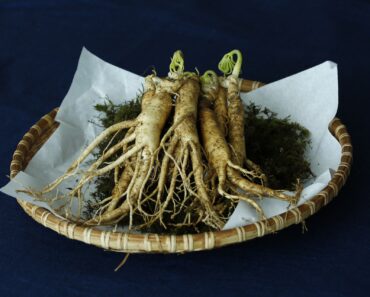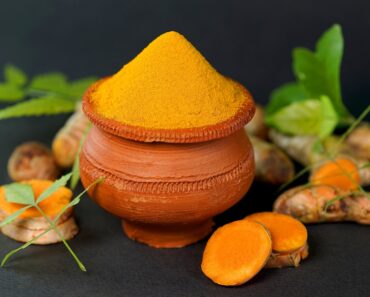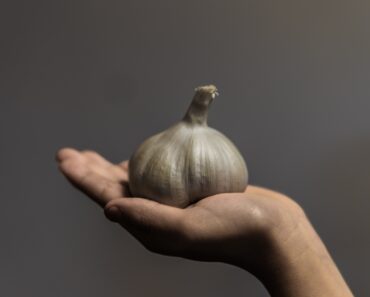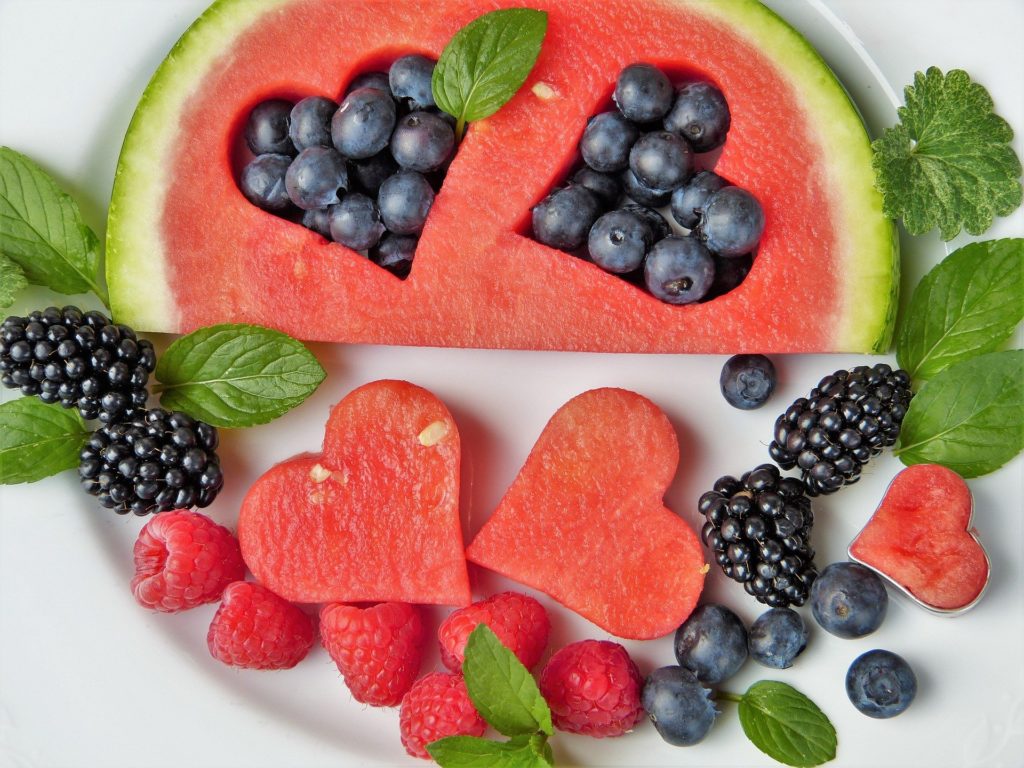
We count down the top 12 fruits you’ve never heard of
1- Chocolate Pudding fruit
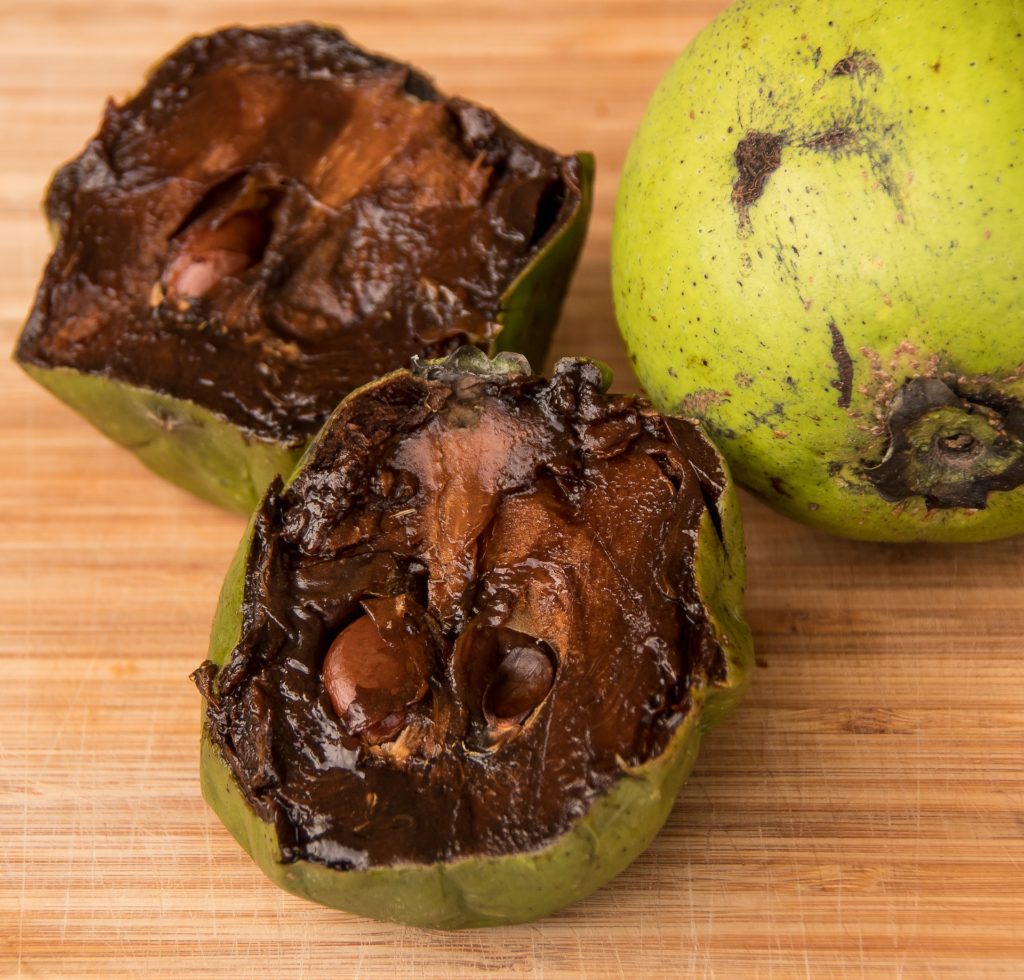
Diospyros nigra or block sapote as it’s also known. It is a creamy brown pudding like fruit native to Mexico. The Caribbean Central America and Colombia this fruit grows on a large tree that can be 80 feet or 25 meters tall, multiple different varieties of this fruit exist all with their own unique features. Generally the tree that produces these unique fruits, takes three to four years from seed to full fruit production.
While firm the fruit is unripe and needs days to soften up. A perfectly ripe chocolate pudding fruit will have a soft wrinkly skin, that can easily be punctured with your thumb.
The inside texture is sometimes described as being tomato like. But with the skin being inedible. The skin gives a good indication of its ripeness as it turns from an all of yellowish color to dark green when it’s ripe. The fruit is about the size of an orange with a pot of seeds on the inside, that should be scooped out and not eaten. Looking and tasting like a delicious chocolate pudding. This fruit is an obvious choice to be used in desserts. It also can be used to make great drinks chocolate mousse, ice cream, juice and baked goods.
The black sapote boosts the immune system, improves digestion. It is high in antioxidants vitamin AC prevents constipation. It is excellent assisting one with their weight loss goals, that you never heard of sony and chocolate pudding to lose weight. The benefits don’t end there the chocolate pudding fruit helps build strong bones. It balances hormones, maintains healthy blood pressure levels, promotes healthy kidneys and is anti aging.
2- Garembullo fruit
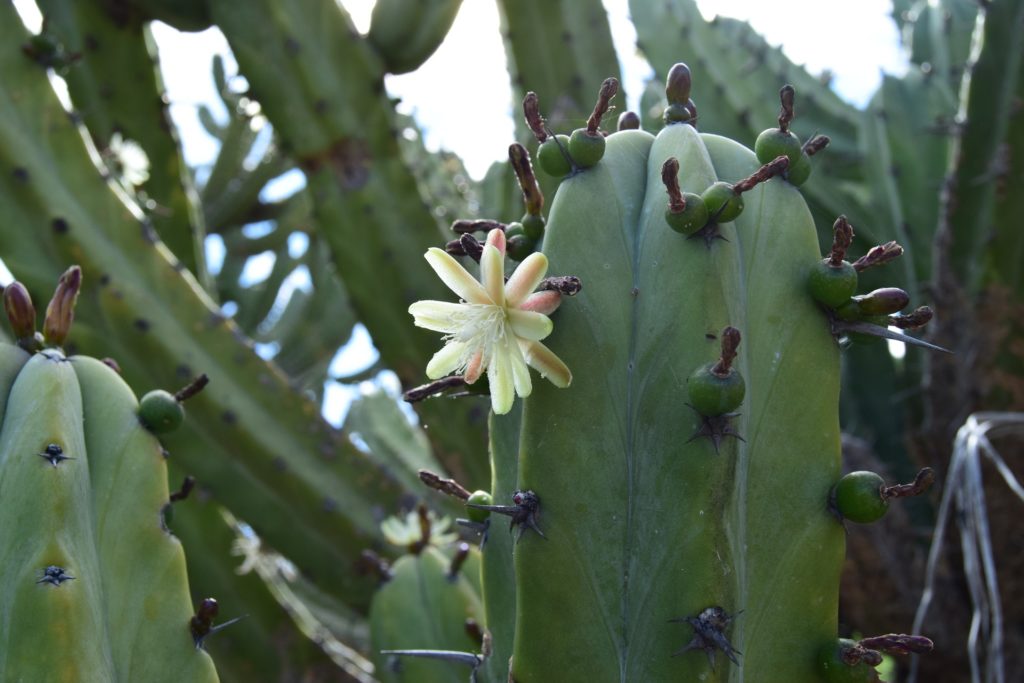
This mexican cactus fruit sometimes called mexican cranberry. At first glance will appear to be a blueberry, the big giveaway is the giant cactus that they grow on, which makes picking these fruit sometimes difficult. The spines often stick into humans or animals, which are very hard to remove. That produce a small greenish yellow flower in July in August, which ripens – the reddish purple berries soon afterwards. Commonly eaten by white-tailed deer turkey and quail, this fruit and the cactus they grow on provide many benefits to the desert landscape.
The Garembullo fruit are full of juice and tiny seeds. The liquid will stain anything it touches much like beet juice. This fruits delicious juice tastes like a mix of grape and watermelon. When eaten fresh aside from being juiced. This fruit is also used in frozen desserts, drinks jellies, jams and sun-dried. They’re high in antioxidants and anthocyanin a flavonoid known to immensely boost health. The best way to try this fruit is finding a roadside fruit vendor who has him ready in those clear plastic containers .
3- Noni fruit
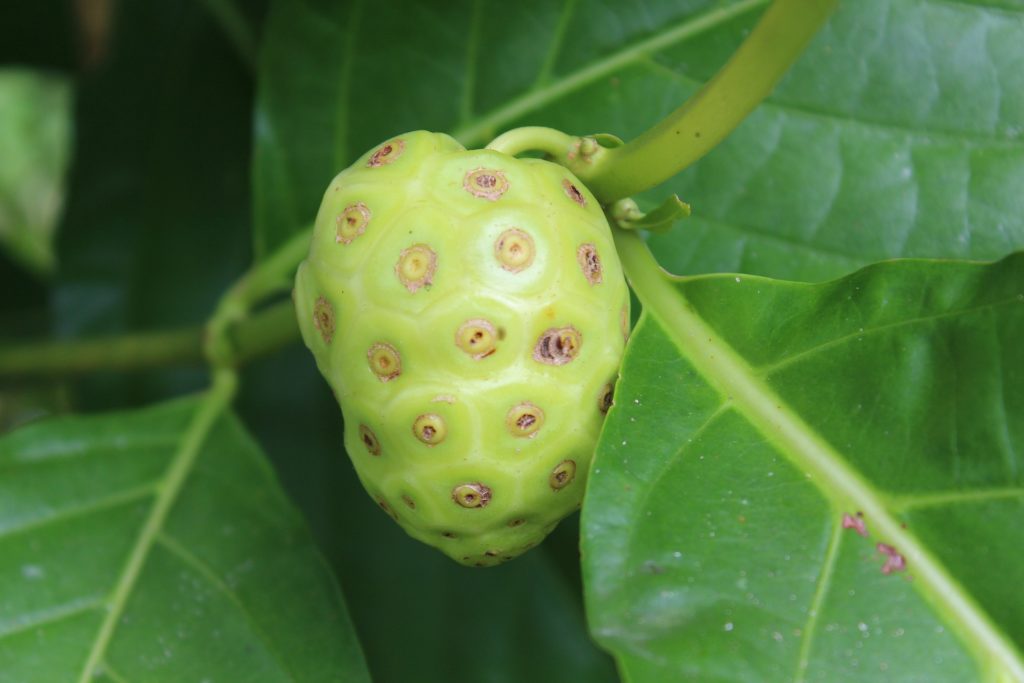
This fruit has over a hundred names used for it like: Indian mulberry, great morinda, beech mulberry, starvation fruit, cheese fruit and vomit fruit. it grows on the morinda citrifolia tree. Southeast Asia and Australia called this fruit home across all the different regions.
If you’re wondering the last two names comes from the smell. It produces when ripening, you can make it past a putrid smell. The taste of noni is bitter and unsatisfying. Despite its unrewarding eating experience, this fruit is packed full of nutrition noni fruit is effective at relieving joint pain, skin conditions. It’s also being used to help heal cancer, cardiovascular disease and diabetes.
This new superfood is full of antioxidants vitamin C, E, zinc, calcium, potassium and iron. Recently noni juice has become a popular product in the booming health industry. Estimates say, the noni juice industry is valued at three billion dollars, measuring 4 to 7 inches or 10 to 18 centimeters in size. The fruit starts off green turns yellow to almost white as it fully ripens. The tree no Negroes on has a very symbiotic relationship with a nature. Fruit bats are also drawn to the noni which helps spread the seeds around the land.
4- Hog plum
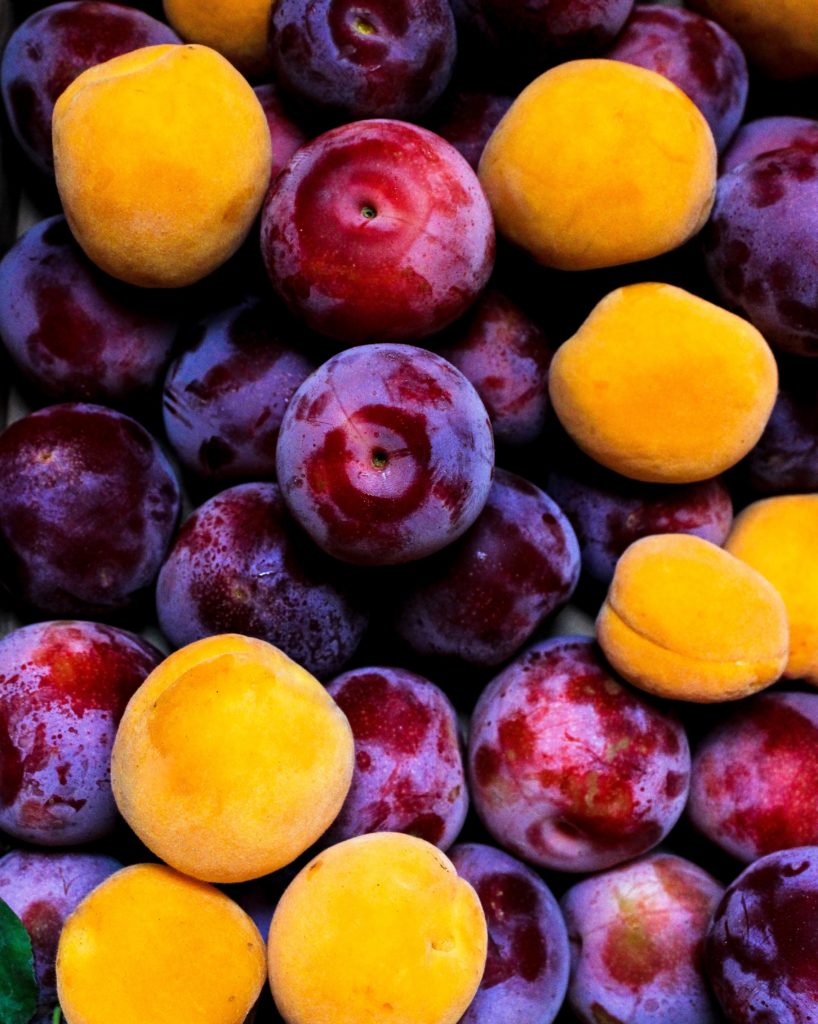
This fruit also going by the names of Spanish plum, red, yellow or purple mombin or jacote. It’s a small, spotty, glossy, skin fruit that varies from green to red in color. Native to tropical regions in the Americas. Jacote is most commonly found anywhere from Mexico to Brazil and the Caribbean.
The hog plum will have a different appearance, based on where it’s found such as in northern states of Mexico. It tends to be more yellow, the flesh inside is pale and yellowish and juicy with one pit in the middle much like a cherry has. They measure one to two inches or three to five centimetres long, with some of them being smaller than that ideal ripeness of the hog plum is firm. But has a little bit of give to it when they’re squeezed.
They’ll keep fine for up to two weeks in the fridge, they’re eaten fresh used in jams drinks and desserts. The hog plum tastes sweet like you’d expect. But it’s very creamy almost like a banana with slight acidity coming through from the skin.
This plum goes well in savory dishes. It also pairs well with nuts vanilla plums citrus pineapple and banana, they’re high in vitamin C, niacin, calcium, potassium, phosphorus. It’s also effective at boosting the immune system, preventing diabetes migraines, hypertension and reducing cholesterol making it a very healthy addition to any diet.
5- Calligonum Junceum
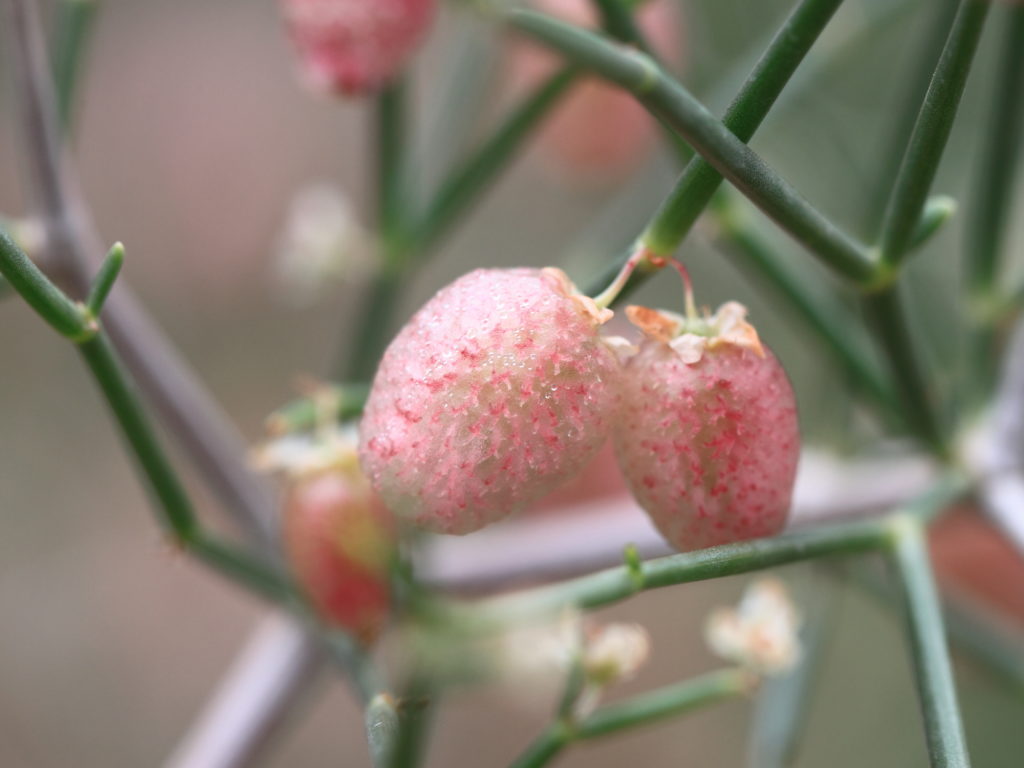
The Calligonum junceum grows on rocky limestone slopes as well as in gravel and clay soil. It’s native to China Russia and use pakistan. More specifically the buck harsh regions, alaikum and Karakum, tian shan and mongolia. This fruit also grows in the sahara in North Africa after it was introduced there.
High in calcium, magnesium and sodium. This fruit flowers in April develops a red oval shaped fruit then turns brown. As it develops a paper bag around it. The shrub will continuously produce fruit making it highly valuable for locals and animal life living around it .
6- Quince
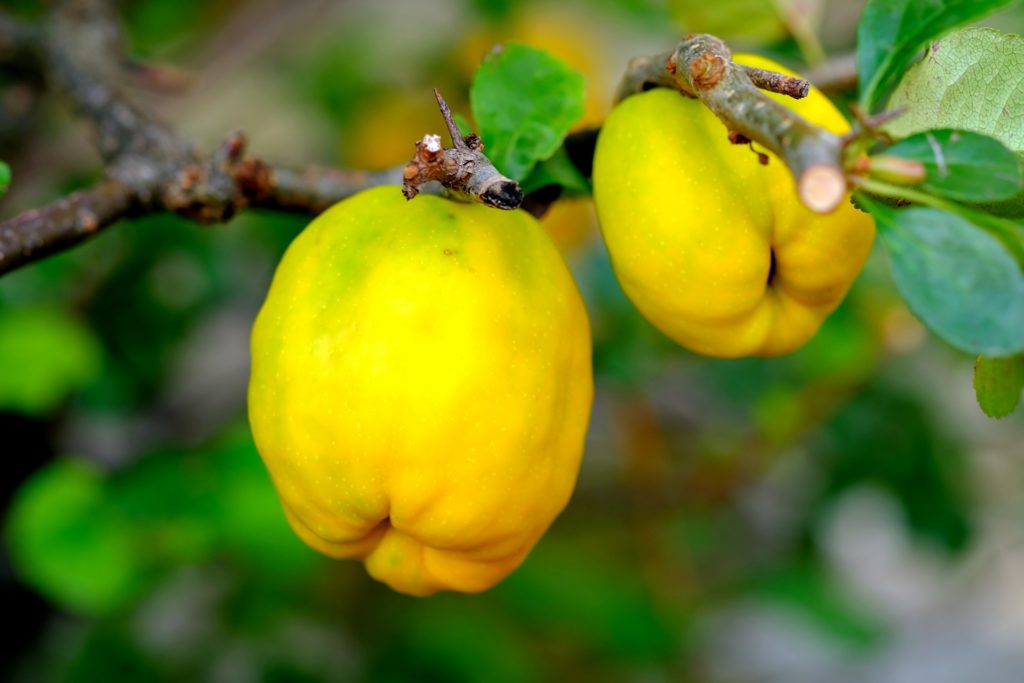
Once cultivated in ancient Babylon, the quince was once sacred to Aphrodite. The quince was a part of the royal culinary events, nostradamus even has several recipes written in his book using the quince. Quince is grown around the world with the majority of places being around Eastern Europe. Turkey is the top producer of the fruit with China being the world’s second largest. This yellowish green fruit is one typically eaten cooked. Raw it can be very tart, but it’s best consumed with chili and lime.
When cooking quince simmer or poach it until the sweetness comes out. Quince stores just the same as an apple. When it comes to pairing flavors with it nutty earthy flavors go well with. This as well as thyme rosemary, figs, pears, apples and nuts. Prized for its medicinal properties the quince is high in vitamin C, fiber potassium copper and iron.
The quince is very good for intestinal health, skin rashes inflammation, allergies and promotes good digestion.
7- Velvet apple
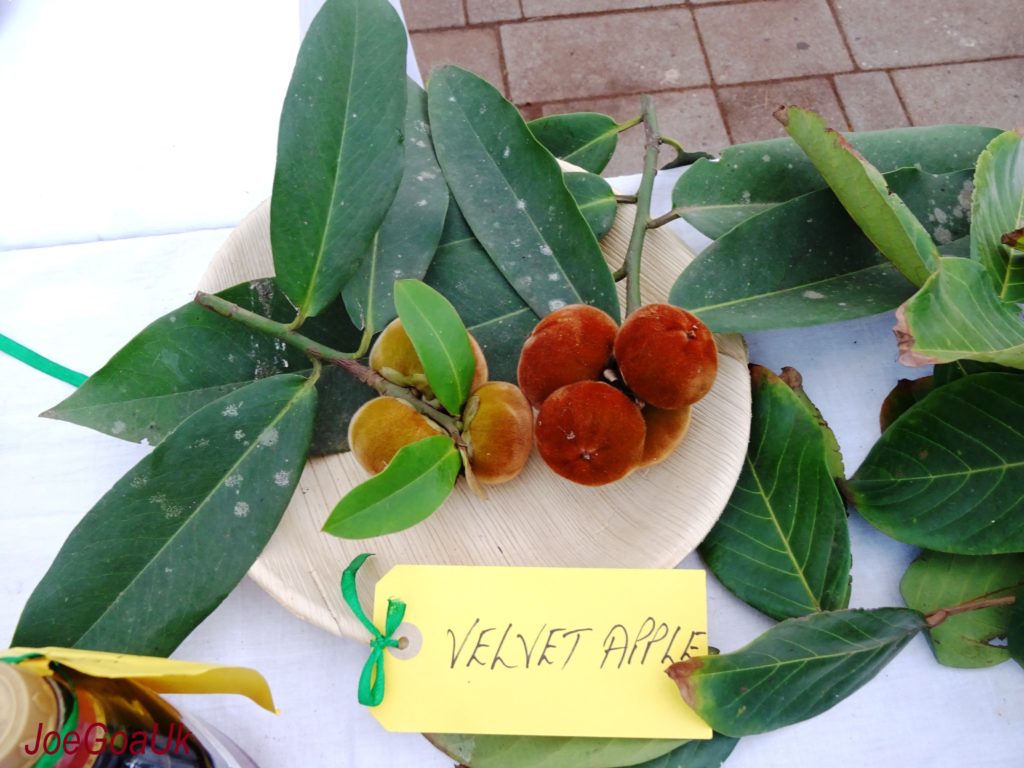
This fuzzy fruit also known as butter fruit, ma bolo or kama Gong is native to the Philippines a close relative to the persimmon. This fruit varies between yellow to reddish brown.
This fruit has a very creamy edible flesh with a repulsive smell to it. What does this fruit smell like? take a guess, its most popularly described as smelling like rotten cheese or cat feces. With all that said people do eat these raw. But also use them in drinks desserts and cooked in dishes like pie.
This stinky fruit boosts immune system, increases red blood cell count, eliminates gastrointestinal issues and constipation. It has also been shown to reduce inflammation prevent chronic diseases reduce. The speed of aging and increase hair growth. Develop a tappa was rich in potassium iron calcium, vitamin c na b vitamins fiber and protein.
8- Wanyi
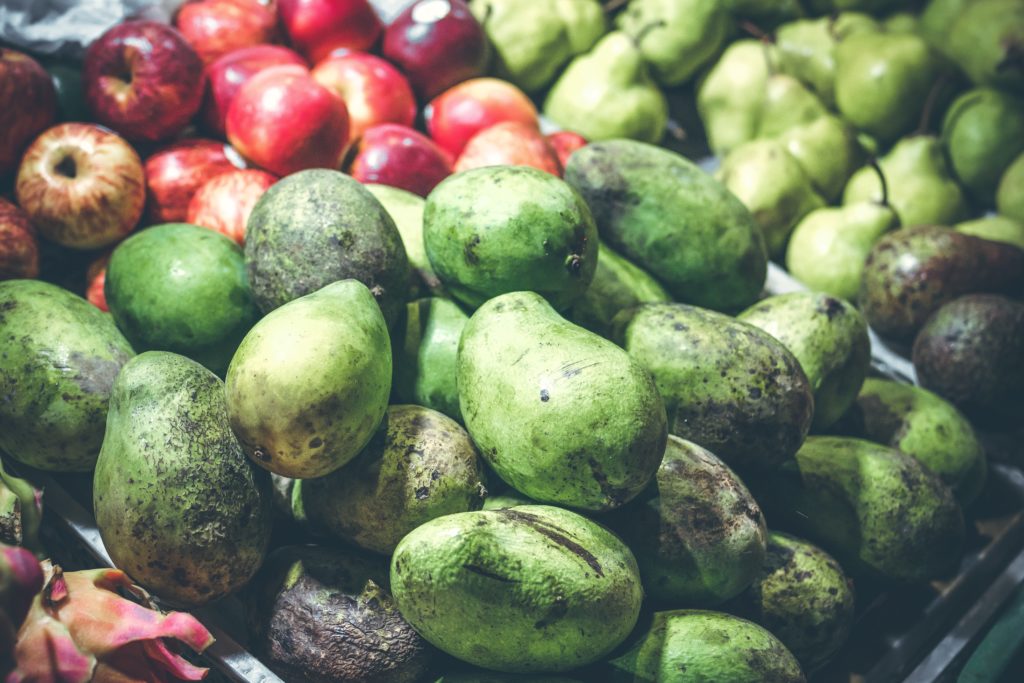
Predominantly grown in the wild forests of Eastern Borneo, the wanyi fruit is larger than a mango with green tea yellowish brown fruit with white flesh inside. It found also on the island of Bali, this fruit is one that needs to be sought out to be had as you won’t find this jungle fruit in the city east calaman tan. It is the main place to find the Wanyi. They grow on a huge tree measuring 40 feet or 12 meters tall. The towers over the Borneo jungle.
These fruit almost look like potatoes hanging of the tree, they dangle down on a main branch which is attached by a single stem. Being much more abundant in the 1980s and the 1990s, Wanyi was found in towns and cities around Borneo, but today are rare find.
The trees only produce fruit once a year with locals saying sometimes only once every three years. The texture of the flush is similar to that of a mango. It smells like jackfruit and tastes sweet and acidic. The tree sap should be avoided as it causes itching. But that deter you from enjoying this fruit that is high in fiber and aids with good digestion.
9- Pandanus Conoideus or red fruit
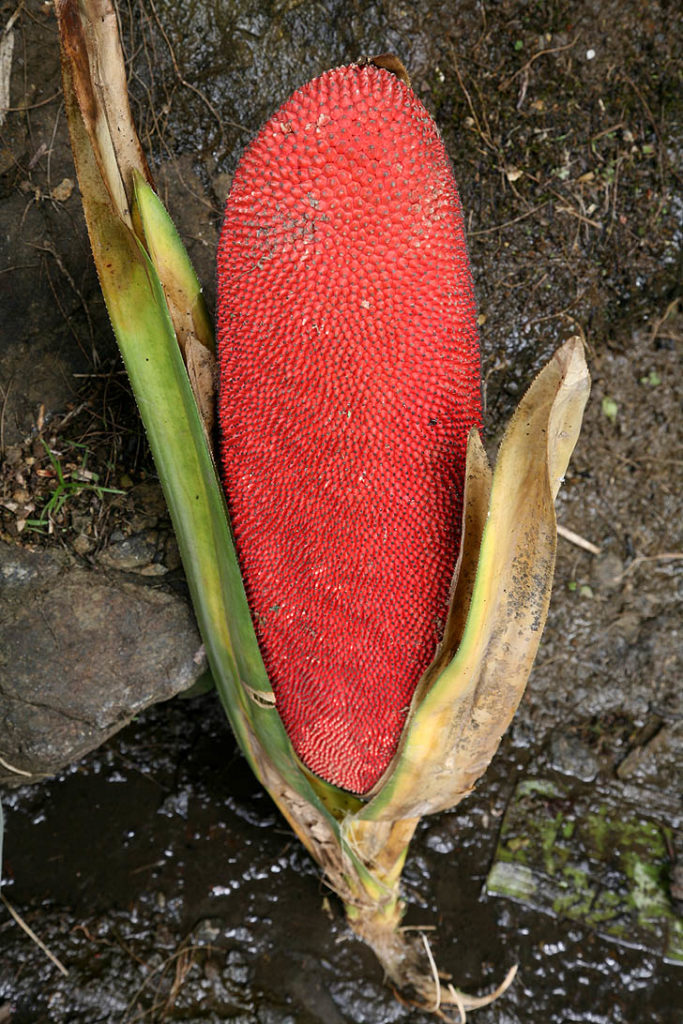
Looking like a giant cob of red corn, the Pandanus Conoideus is a plant in the pendant family consumed primarily in Papua-Indonesia. The locals called them Baja Merhi or red fruit. It also goes by the name of screw spine, Kwon soo, coke late, Oil pandan or red pandanus.
There are 30 varieties of red food with only four of them having high economic value being. The Merhi panjang or a long red the Merhi pendick or short red coke plate or brown and cumin or yellow. Each red fruit has their own designated uses such as the long run which is most commonly used in traditional medicine. This variety can measure up to 3.3 feet or 100 centimeters long, and weighs 16 point, 5 pounds or 7 point , 5 kilograms.
The crimson color of the red fruit indicates it being rich in beta-carotene. But also shown effectiveness at helping treating aids, cancer, hepatitis diabetes, osteoporosis, lupus as well as lowering uric acid in the body. Improving brain function, lowering cholesterol and improving eye disorders.
10- King coconut
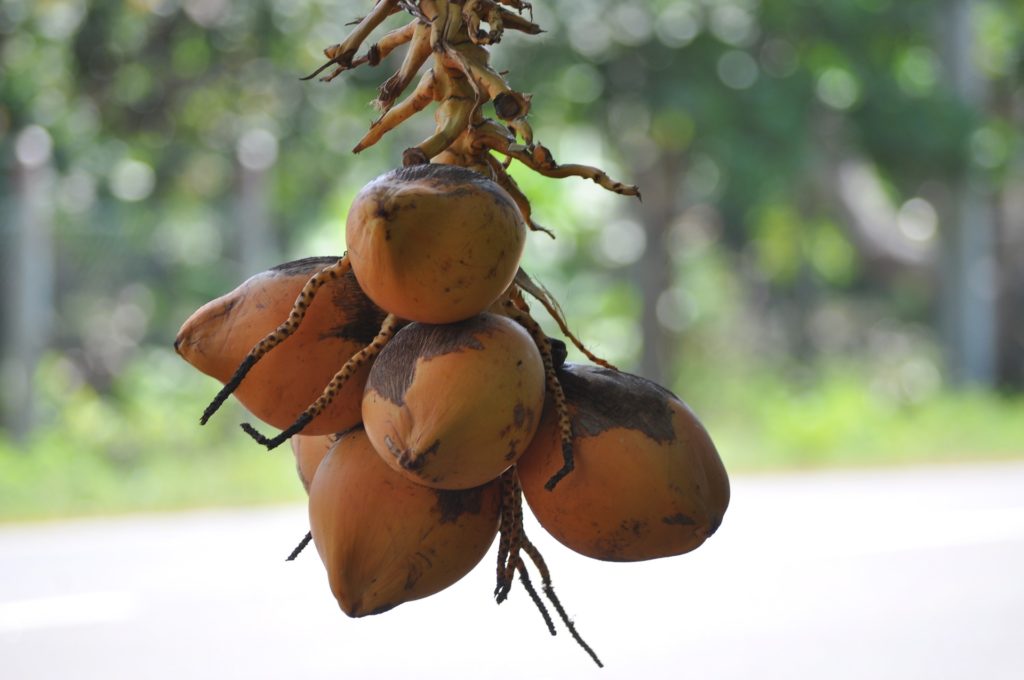
It’s growing particularly in Southeast Asia the king coconut is native to sri lanka. These coconuts grow in clusters of as many as 20 on a single tree, and take around seven or eight months to grow before they’re ready to be enjoyed. Then Billy as it’s known locally in Sri Lanka has multiple different sub varieties, with the most popular in being red dwarf.
The ran thumb Billy variety is smaller and contains 40 nuts in a bunch, the flesh of these coconuts can range from white to a rich pink color full of electrolytes b-complex vitamins potassium, calcium, magnesium, sodium and phosphate. The king coconuts liquid can be used to treat kidney and urinary tract issues.
The water of a king coconut has more potassium than a banana, and more magnesium and calcium than an orange. Cooling and refreshing to the body, the coconuts juice is a recommended addition to pregnant or a nursing mothers diet.
11- Cotton fruit or Santol
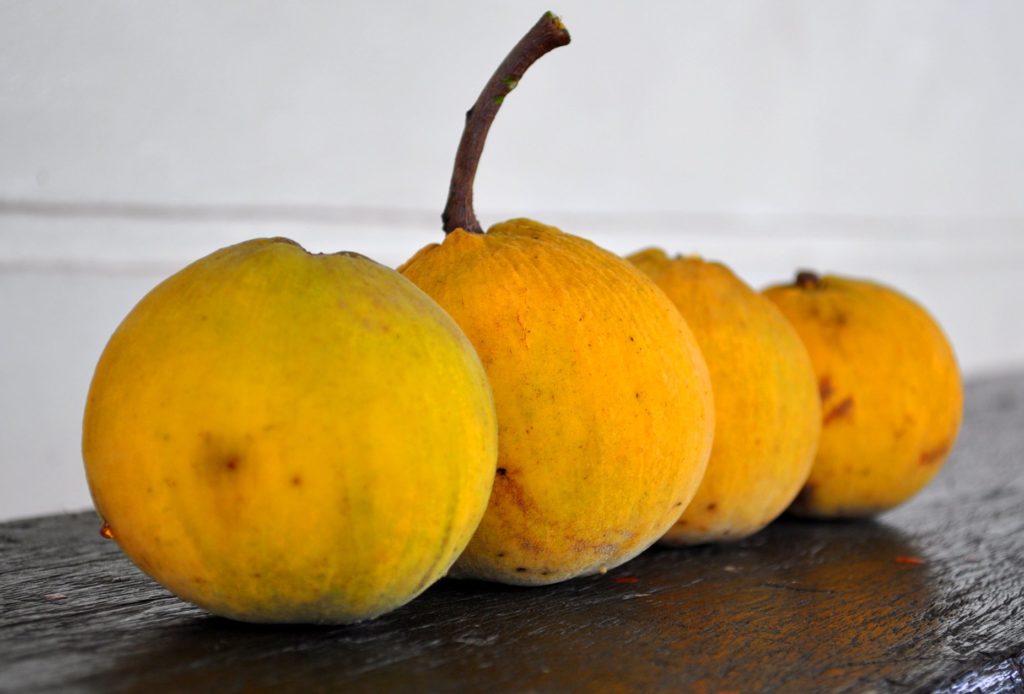
Native to Indonesia, the cotton fruit or Sandoricum koetjape as it’s also called or santol, was introduced to Indochina, Sri Lanka, India, northern, Australia, Mauritius and the Seychelles. The treaties grow on can reach up to 150 feet or 45 metres tall, which can produce one of two varieties the yellow and red. The red being the more common, being similar to a peach in size, shape and fuzziness.
Cotton fruit depending on the variety will have a skin that may be thin or thick. Sporting a mild peachy flavor with milky juice, the inside has inedible Brown seeds that should be consumed. Often, this fruit can be sour making it less desirable, harvested by hand, brave workers, climb the trees, pulling the fruit off one by one. Some growers ease along stick to grab the fruit besides eating raw.
Cotton fruit is cooked candied and made into marmalade. The Philippines has a dish that has the Ryan graded and cooked with spices in coconut milk. Not only the fruit but the full tree is useful. The wood is good for construction and easy to polish. The bark and leaves are used medicinally. It takes five to seven years from seed to fruit production. A single mature tree can produce up to 24,000 fruits per year that will be ready in August in September.
Showing anti-inflammatory properties treatment for diarrhea and dysentery, the cotton fruit is rich in vitamin C, protects against cardiovascular disease, boost the immune system and promotes proper cell metabolism.
12- Java plum
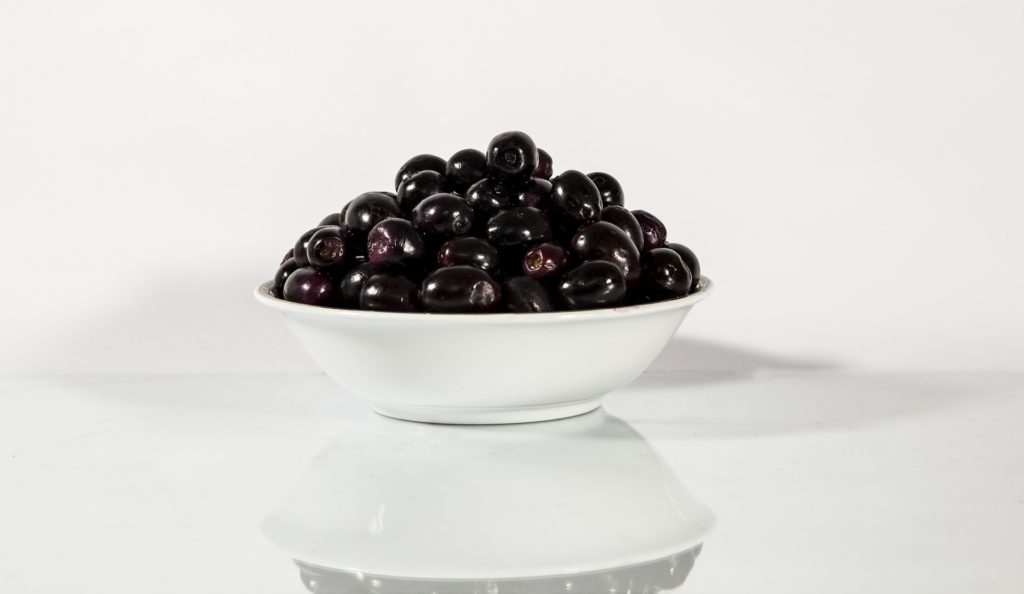
Home to the Indian subcontinent, this evergreen tropical tree is commonly known as the Java plum, jam Boland black, plum jamun, Malabar plum, and du hat. Growing on a tray that reaches a 100 feet or 30 metres tall this slow. Growing tree will live for more than a 100 years.
Introduced to Florida in 1911, is also commonly grown in tread at Tobago, Guyana and Suriname. Brought to Brazil during Portuguese colonization. It spread naturally as it became a favorite among many species of native bird. It’s purple on the outside with white flesh on the inside, the Java plum is a juicy fruit the size of a small plum. Tasting like a mix of a grape than a plum has a Java plum ripens it becomes more sweet, and soft whereas the less ripe fruit is mildly sour and astringent Street.
Vendors will also sell these out of a pot mixed with salt to help bring out the flavor, eaten raw, meat into juice jam, salted or tasty wine. This fruit is also made into vinegar the leaves being highly nutrient dense are often fed to livestock rich in vitamins A and C. The Java plum also is packed full of calcium, magnesium, phosphorus and potassium.
Traditionally a staple in Chinese medicine, different parts of this tree are used to help control high blood pressure, blood glucose levels digestive and skin issues.
Hope you enjoyed this list..!




